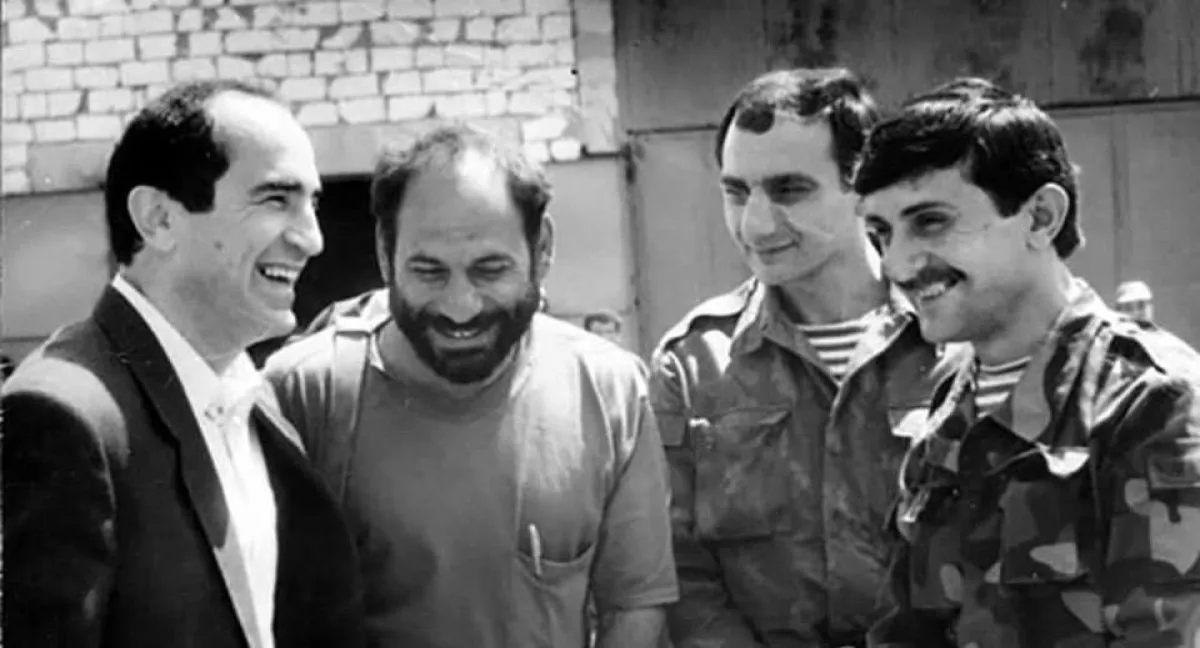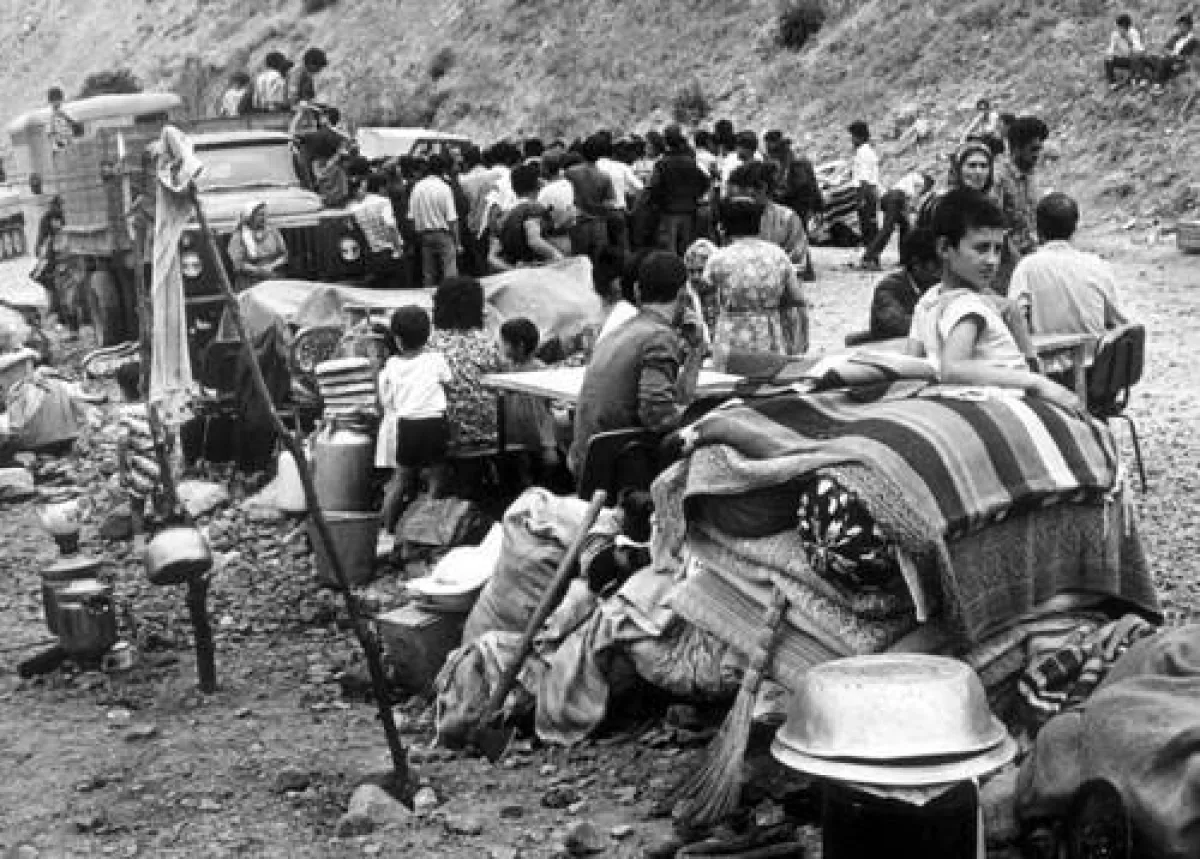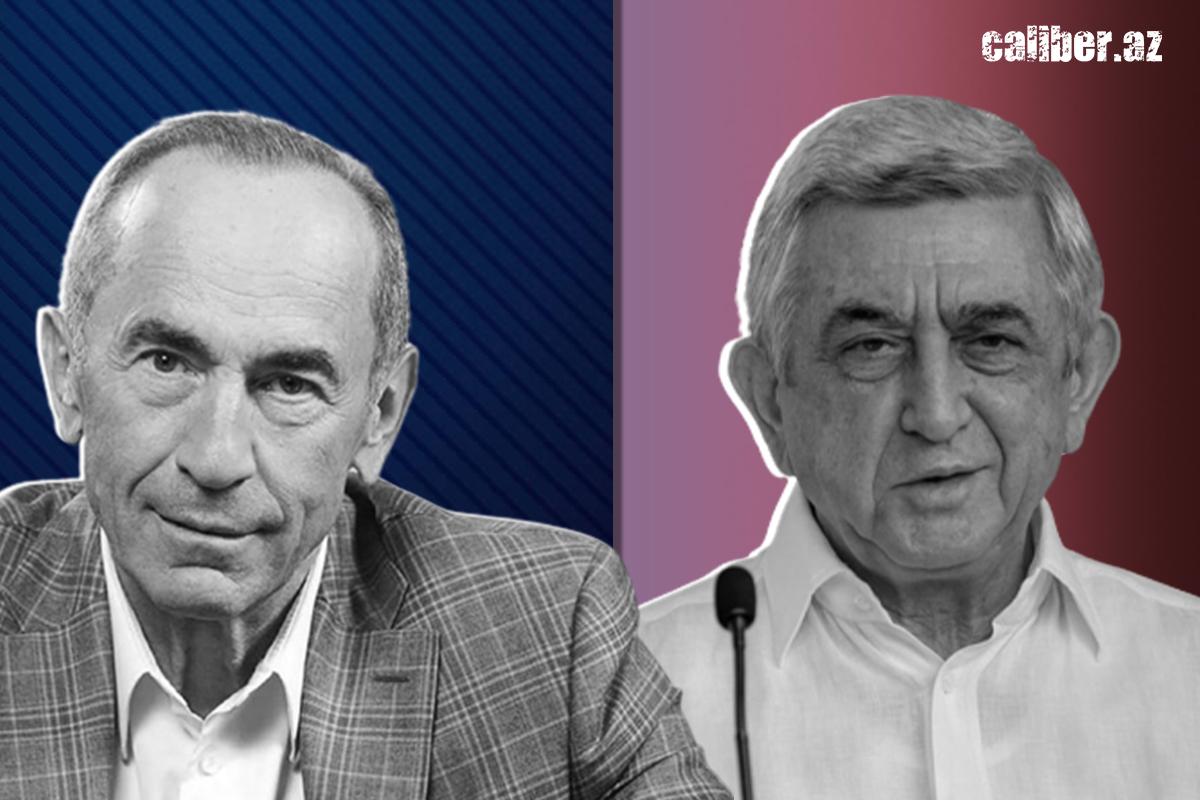The path of hatred Evidence of Armenia’s criminal policy
On April 28 at the Baku Military Court, where the trial continues against Armenian nationals accused of crimes against peace and humanity, war crimes, terrorism, and numerous other offences, new pages of a tragic history were once again brought to light—pages for which the Republic of Armenia must bear both legal and historical responsibility.
During today’s court proceedings, video materials were presented that shed light on the true nature of the occupation of the Shusha district in 1992.
Among the evidence shown, archival footage from Armenian sources held particular importance, including videos filmed by the very participants in the occupation of Azerbaijani territories. One such video contains the testimony of Major General Arkadi Ter-Tadevosyan, known by the nickname “Commando”—the man who led the operation to seize the city of Shusha. These recordings captured not only the preparations for the occupation but also the mindset of the Armenian side, driven by hatred toward Azerbaijanis.

Video recordings presented during the trial also identified the individuals who led the assault on Shusha from four directions: Samvel Babayan, Seyran Ohanyan, Valery Chitchyan, and Arkadi Karapetyan. The mere presence of these names in footage filmed by the Armenian side eliminates any possibility of denying the organised and centralised nature of the aggression.
Particular emphasis must be placed on the rhetoric captured in these videos: the objective of seizing Shusha was described not simply as taking control of the city, but as “cleansing it of crawling insects.” Yes, that exact phrase was used. Such monstrous language reveals the inhuman character of the aggressors and confirms the existence of a specific intent—an element required for mass killings to be legally classified as genocide.
It was also noted that the plan to capture Shusha was submitted to Vazgen Sargsyan, Armenia’s first Minister of Defence, and approved by him. Thus, the court was presented with direct evidence that the operation to occupy the Azerbaijani city was carried out under the orders of Armenia’s highest military and political leadership.
Azerbaijan’s Assistant Prosecutor General for Special Assignments, Tugay Rahimli, emphasised that these facts point to a state-sanctioned, organised campaign of aggression against Azerbaijan.
However, these revelations came as no surprise. They merely reinforce what Azerbaijan has been consistently conveying to the international community for decades: the occupation of Azerbaijani territories was carried out by the Republic of Armenia and was accompanied by deliberate incitement of hatred and a policy of ethnic cleansing.

The legal classification of mass killings as genocide requires proof of specific intent. In the context of crimes committed against Azerbaijanis—both in Khojaly and in other tragic episodes—hatred served as the fundamental organising element of these crimes.
1. Hatred was propagated at the official level and was endorsed by the Armenian state.
2. Azerbaijanis were systematically portrayed as “barbarians” and “monsters,” whose very existence on “Armenian lands” was depicted as a threat.
3. This propaganda predetermined the particular brutality exhibited during the capture and destruction of Azerbaijani settlements.
Armenian state propaganda constructed the image of the Azerbaijani as an enemy, thereby justifying plans for their physical elimination. Armenian officials and ideologists of Armenian chauvinism openly expressed fear at the prospect of Azerbaijanis and Armenians continuing to live together. In this context, it is necessary to recall the statements of Zori Balayan, one of the chief ideologists of the “Miatsum” movement, who once asked: “What would have happened to us if Azerbaijanis had continued to live in Armenia?” The Armenian side answered this question through its actions—by carrying out mass killings and the expulsion of peaceful Azerbaijani civilians.
The propaganda of hatred against Azerbaijanis was transformed into an official state ideology. On July 23, 1993, Armenia’s first President Levon Ter-Petrosyan, speaking before members of the terrorist organisation Yerkrapah on the occasion of the occupation of the Azerbaijani city of Aghdam, openly expressed joy over the expulsion of Azerbaijanis. As with precedents set by the tribunals for Rwanda and the former Yugoslavia, such admissions must be regarded as significant evidence in international jurisprudence.
Later, the term “ethnic incompatibility,” introduced by Robert Kocharyan, further underscored the deep-rooted hatred towards Azerbaijanis within Armenian society. His statement constituted a direct admission of the deliberate incitement of interethnic hostility at the highest levels of state authority.

Equally significant are the admissions made by Serzh Sargsyan in his interview with British journalist Thomas de Waal regarding the Khojaly genocide, in which he effectively confessed that Armenians carried out mass killings of Azerbaijani civilians as a means of instilling fear. This serves as further evidence that the first three presidents of independent Armenia—Ter-Petrosyan, Kocharyan, and Sargsyan—were directly involved in promoting and implementing a policy of ethnic hatred.
The consequences of this criminal policy were reflected in the extreme brutality shown by Armenian armed formations during the execution of plans to seize Azerbaijani territories. Had hatred not been the driving force behind these actions, it is unlikely that Armenian troops would have demonstrated such inhumanity during the occupation of Azerbaijani towns and villages.
The history of genocides around the world—in Rwanda, in Srebrenica—demonstrates that it is state-led propaganda of hatred that often acts as the catalyst for mass killings. The occupation of Azerbaijani territories and the genocide of the Azerbaijani population are not isolated events, but interconnected links in the same tragic chain.
What is being presented today in the Baku Military Court once again reveals to the world the truth about the grave crimes committed against the Azerbaijani people. These pieces of evidence must not remain confined to the pages of a criminal case file—they must be heard by the international community, which bears the responsibility to give a proper assessment of the acts of aggression, ethnic cleansing, and genocide committed by Armenia against Azerbaijan.
Azerbaijan, committed to the principles of international law, will continue to pursue justice with determination. Historical truth and judicial fairness must prevail.








